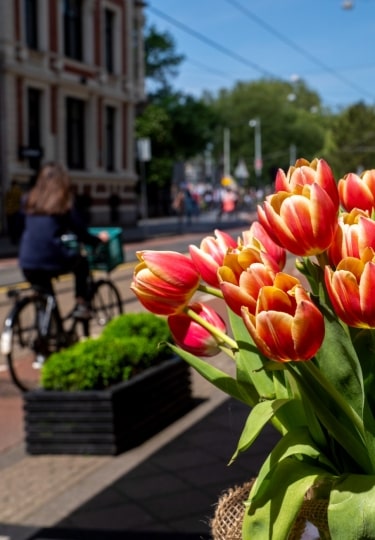Wondering what the Netherlands are known for? Though small in size, it’s huge when it comes to things to do. Its coastal, low-lying nature makes it a land of canals, windmills, and vast vibrantly colored tulip fields.
But it also has buzzing cities, some of the most relaxed counter-culture laws in Europe, and incredible history. The Netherlands is also the birthplace of internationally renowned artists and the soccer “Total Football” of the Dutch national team much admired around the world.
Read on so you can plan your next north European adventure.
Van Gogh
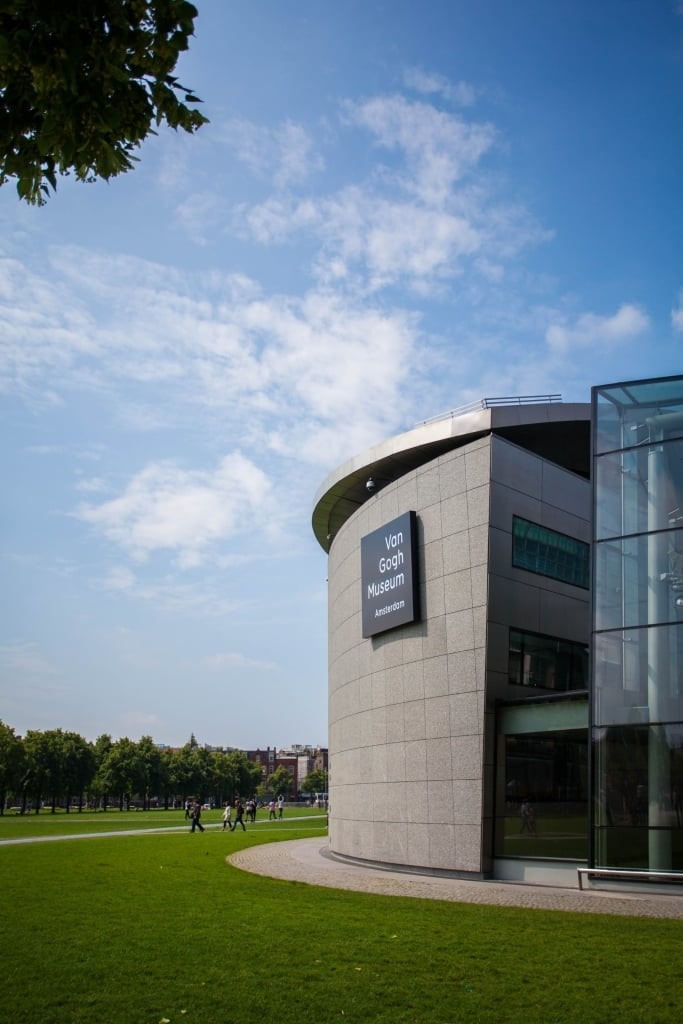
Van Gogh Museum, Amsterdam
Everyone’s heard of Vincent Van Gogh, which is somewhat ironic when you consider the Dutch post-Impressionist master is as famous for cutting his ear off as he is for his artwork. Van Gogh’s success came after his passing at the age of just 37 in 1890. He only sold one painting in his lifetime.
Now incredibly influential, he was also incredibly prolific creating more than 2,000 works in less than a decade with some of the most famous including The Starry Night, Sunflowers and, inevitably, Self-Portrait with Bandaged Ear.
The best place to see his work is Amsterdam’s Van Gogh Museum, known as one of the best museums in the world, located in the Museumplein area.
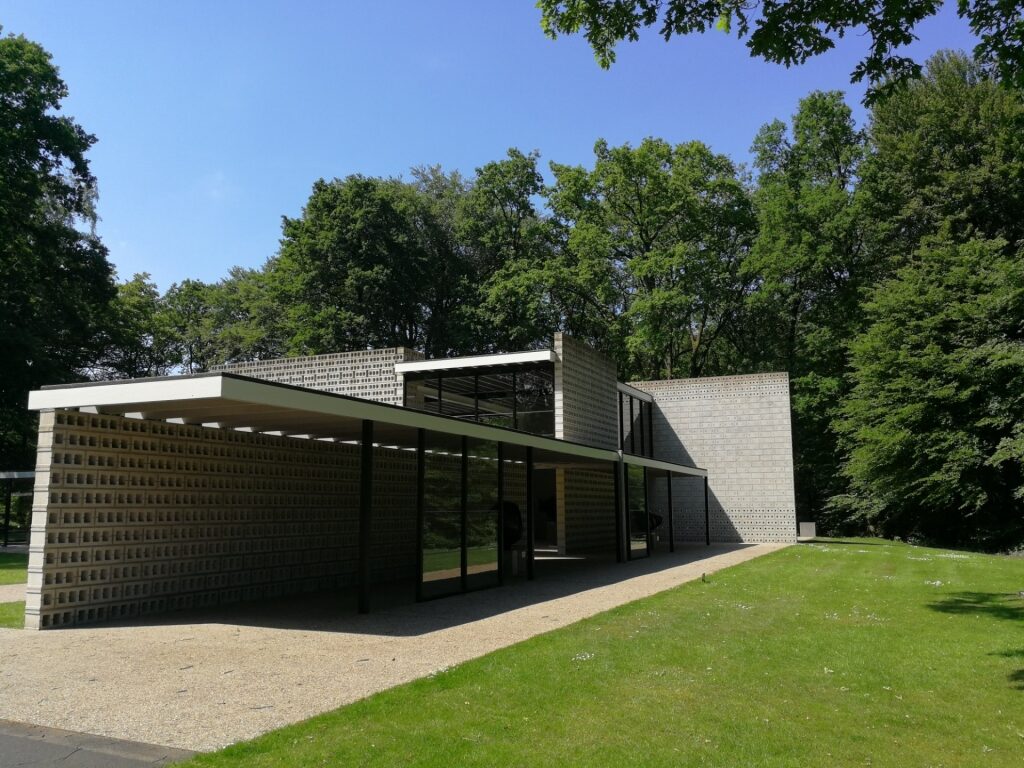
Kröller-Müller Museum, Otterlo
It hosts 200 paintings, 500 drawings, and some 700 of his letters. Alternatively, the Kröller-Müller Museum in Otterlo’s beautiful Hoge Veluwe National Park, a 90-minute drive from both Amsterdam and Rotterdam, is home to the second largest collection of his work in the world.
Tulips
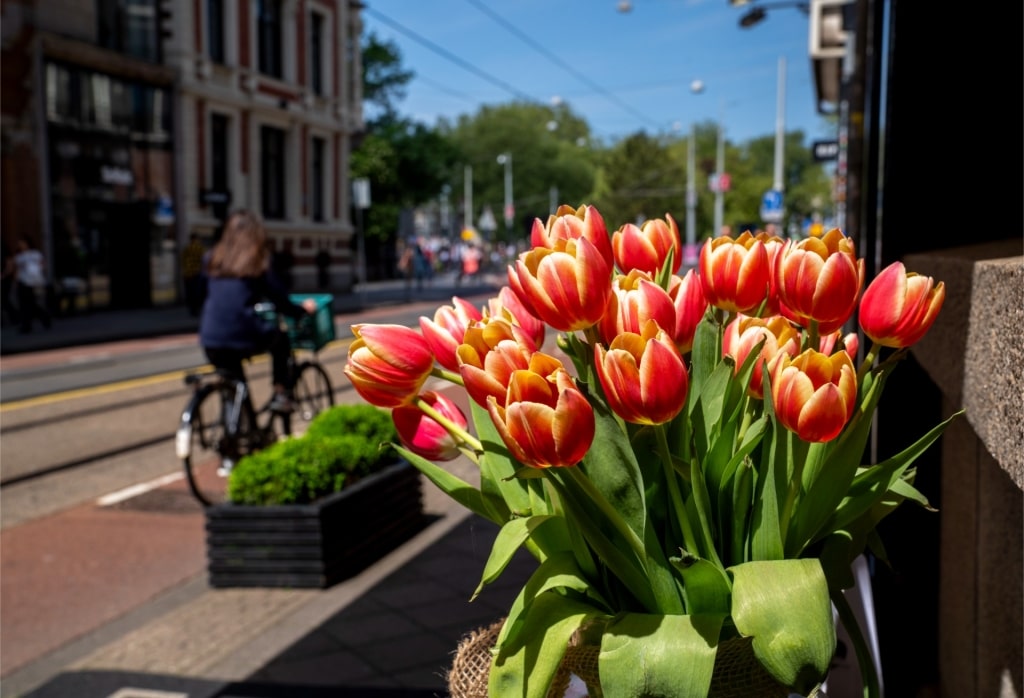
Tulips
“When it’s Spring again, I’ll bring again, tulips from Amsterdam,” says the old song. And it’s true; a visit to the Netherlands in spring is a riot of color thanks to it being the prime season for these iconic flowering plants.
Originally from central Asia, tulips became popular here during the 17th century, when the price of bulbs became so high the resulting rush to buy them was christened Tulip Mania.
From mid-March to mid-May, Keukenhof, known as the Garden of Europe, is where you can see millions of tulips in full bloom. Aalsmeer, the world’s largest flower market, is around 40 minutes from Amsterdam and 90 minutes from Rotterdam.
At other times, head for Amsterdam’s Bloemenmarkt, or the Amsterdam Tulip Museum in the Jordaan district to find out more about the Dutch fascination with these gorgeous flowers.
Canals
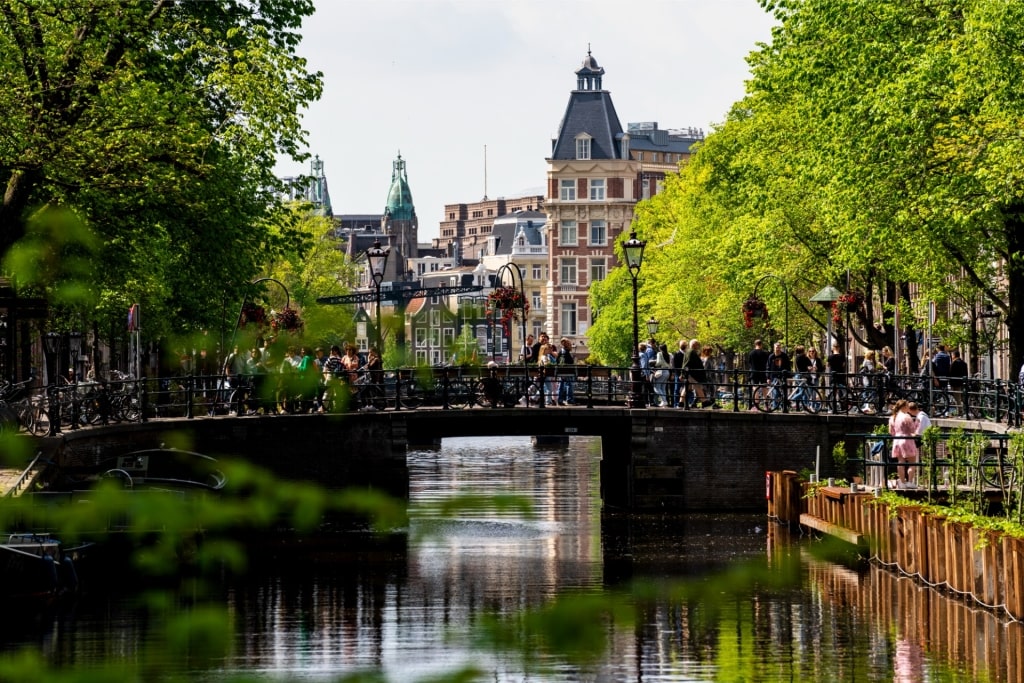
Canal Belt, Amsterdam
Surely something the Netherlands are known for most of all is canals. In both Amsterdam and Rotterdam, canals are quintessential elements of Dutch urban design and culture.
The European capital city of Amsterdam is epitomized by an extensive canal system centering around the Grachtengordel, or Canal Belt, which features the famous concentric canals of Herengracht, Prinsengracht, and Keizersgracht.
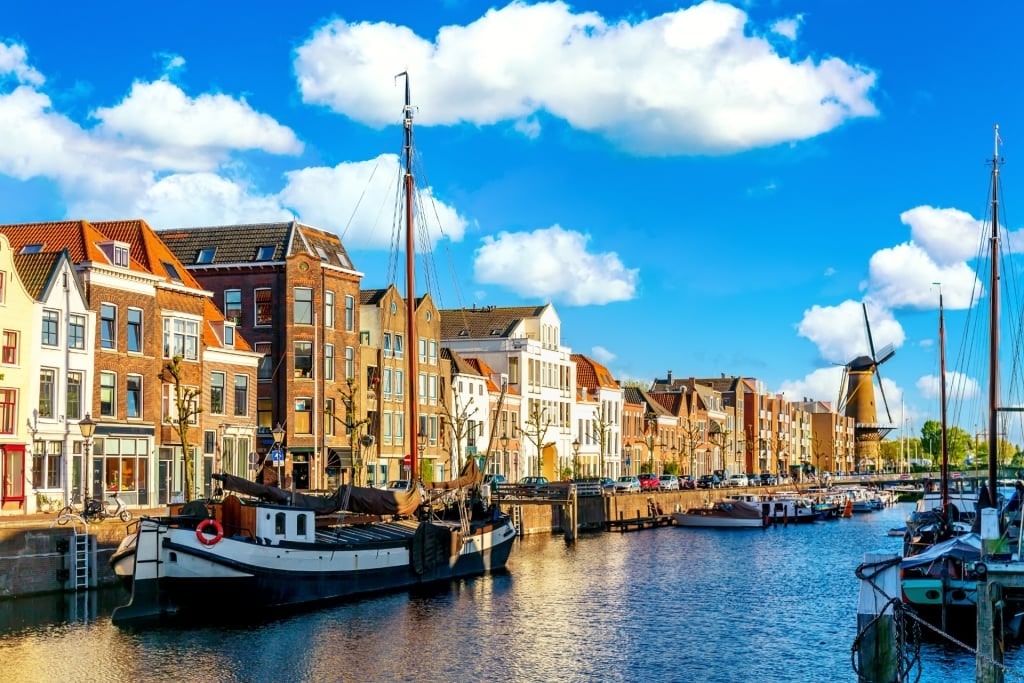
Delfshaven, Rotterdam
One of the best things to do in Rotterdam is to explore its canals in Delfshaven, a historic area that survived extensive bombing in World War II.
There are multiple ways of seeing the canals in both cities, including water taxis, pleasure boat tours, and kayaking, while in winter it’s possible to ice skate on them when they are frozen over.
Anne Frank
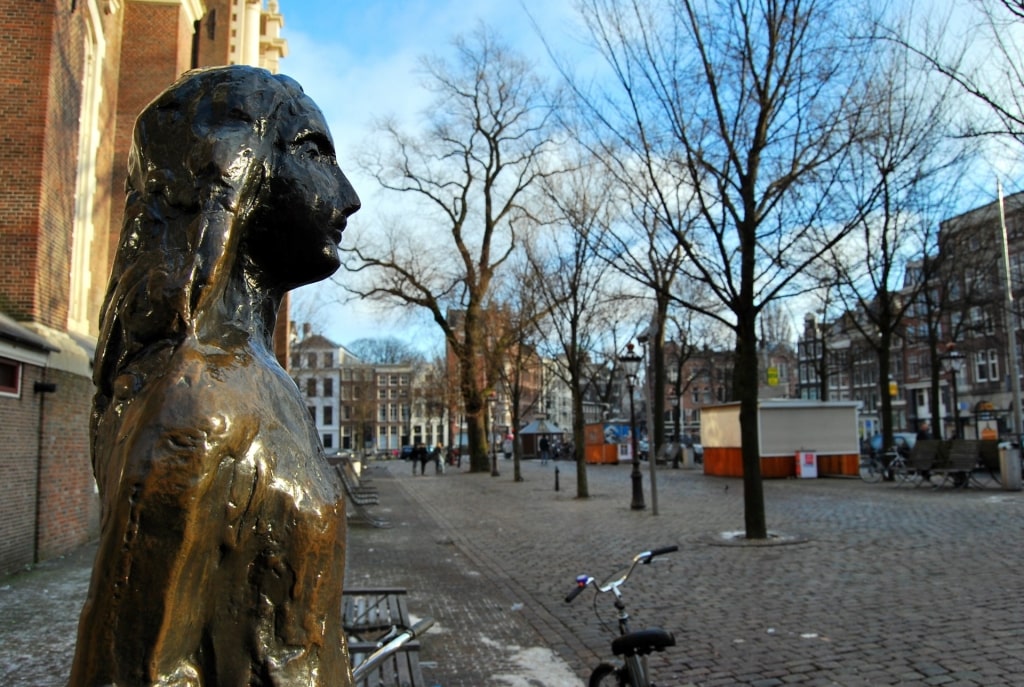
Anne Frank House, Amsterdam
Anne Frank is one of the most well-known figures of World War II, having documented her and her family’s hiding from Nazi persecution in a secret annex in her father Otto’s place of work. For around two years, a young Anne wrote about their daily life in a diary, offering a poignant and powerful perspective on the horrors of the Holocaust.
After the war, these went on to be published and gain worldwide fame as “The Diary of a Young Girl”. Today, the Anne Frank House at Prinsengracht 263-267 in Amsterdam Centrum preserves that secret annex as a museum that is now one of the city’s most popular attractions with tickets selling out quickly. Book in advance to avoid disappointment.
Bicycles
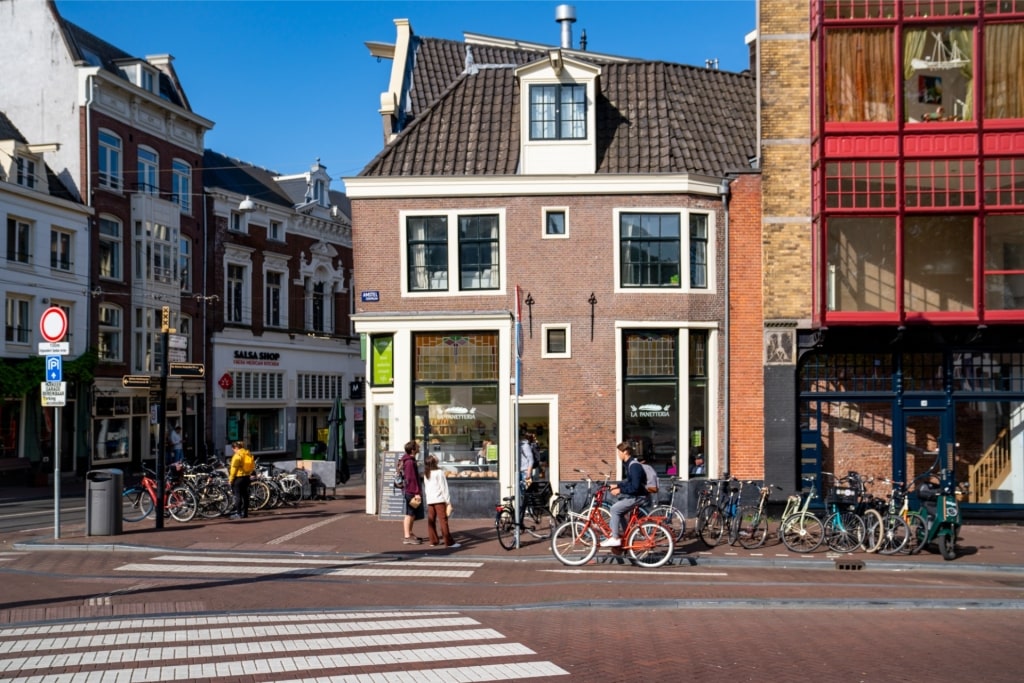
Amsterdam
It’s famously said that there are more bikes than people in the Netherlands and it’s not hard to see why. The country is almost completely flat and with the main coastal cities having canal systems and narrow roads, bicycles are an ideal way to get around, leading to a culture that prioritizes the needs of cyclists.
Amsterdam and Rotterdam both have an extensive network of cycling paths that take in the canals and most famous sites, and outlets offering bike rentals and guided tours are plentiful in both cities. Out of the cities’ hustle and bustle, the Green Heart, or Groene Hart, is a rural area in Randstad that is ideal for cycling tours through the countryside.
Windmills
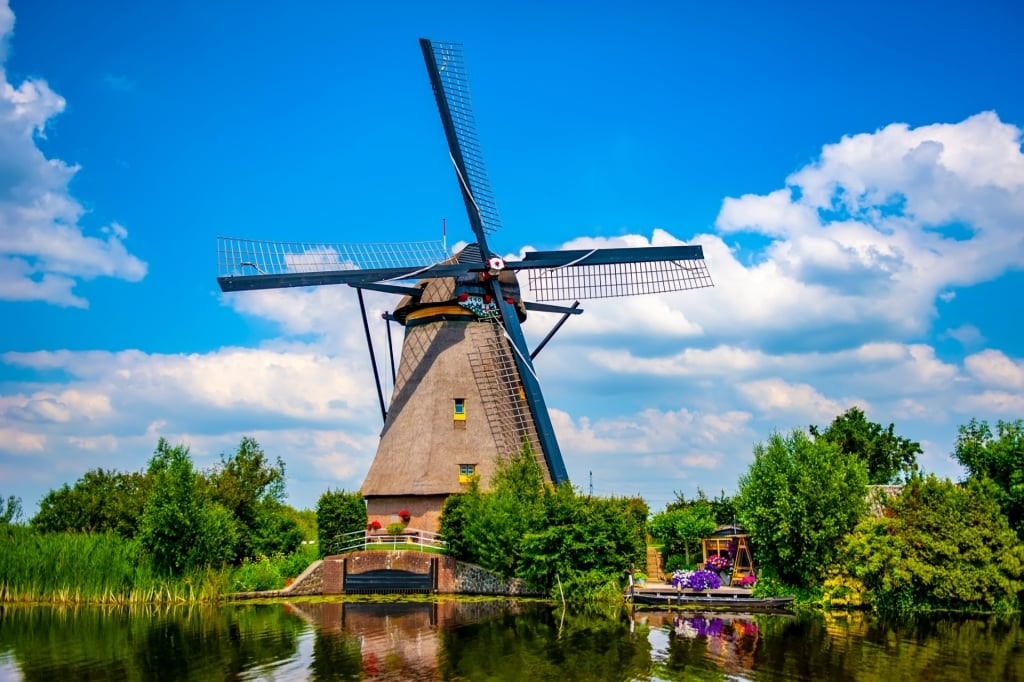
Kinderdijk
With its flat terrain and high winds, windmills have become iconic symbols of the Dutch landscape. The earliest examples date back to the 13th century when they were initially used for grinding grain, but their uses multiplied to include everything from sawing wood to pumping water to help drain wetlands for reclaimed land.
Some of the best examples are in the World Heritage site of Kinderdijk, a 90-minute drive from both Amsterdam and Rotterdam. It is home to 19 well-preserved windmills dating from 1740 as part of a larger water management system.
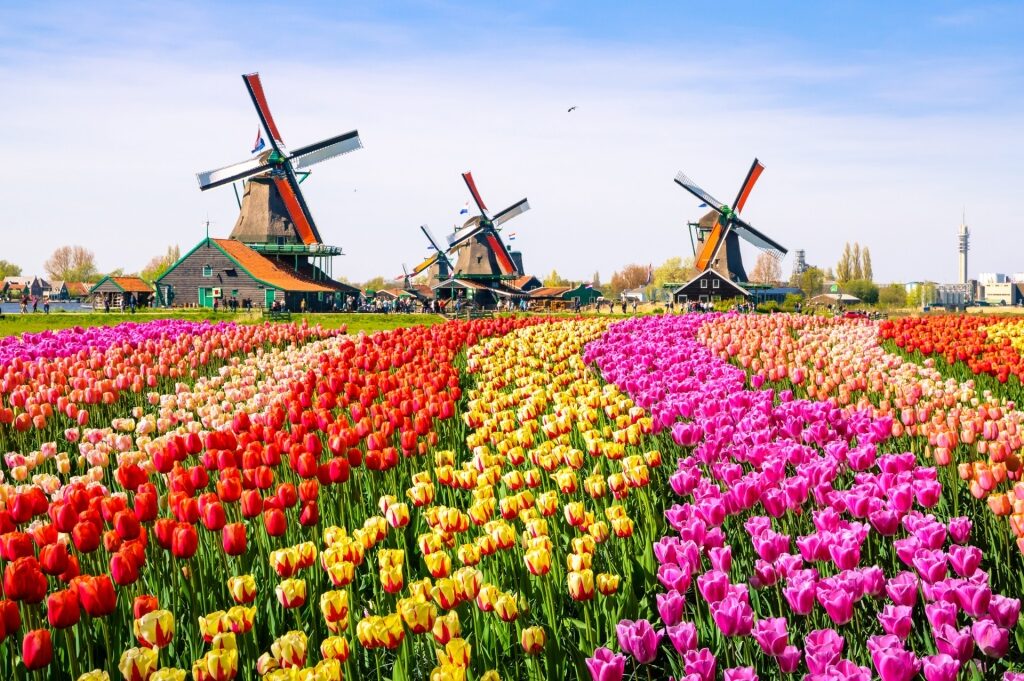
Zaanse Schans
Zaanse Schans, just outside Amsterdam, is one of the most unique places to visit in Europe. There is an open-air museum featuring several mills still in operation for grinding spices, sawing wood, and making vegetable oils.
Cheese
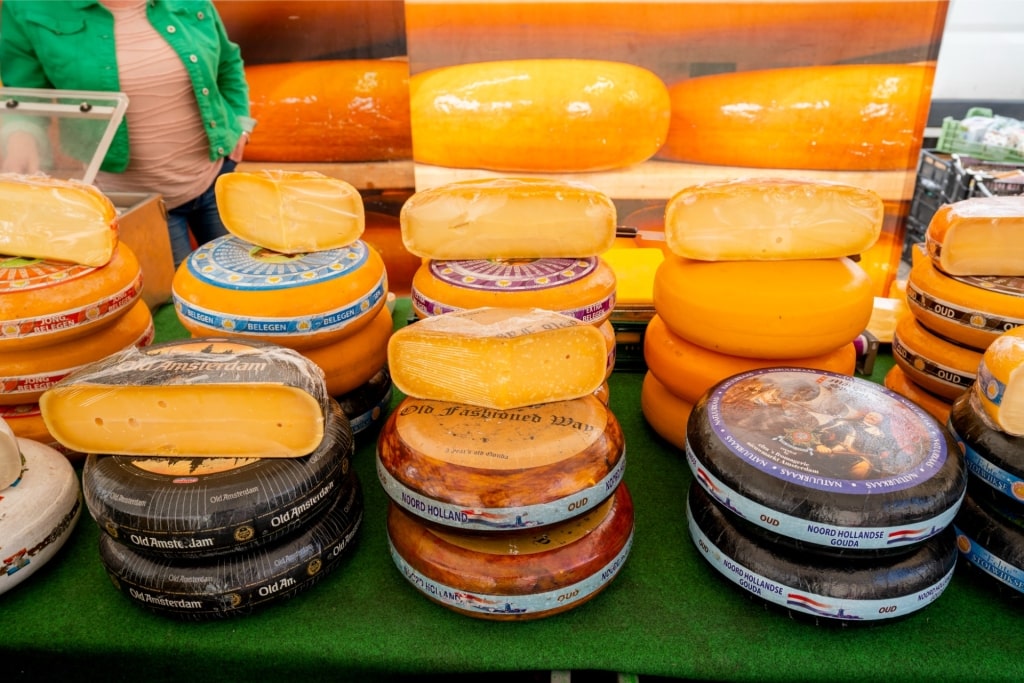
Cheese
Another thing the Netherlands are known for is cheese, specifically Edam and Gouda, two yellow cheeses known around the world. Gouda is made in the town of the same name, just east of Rotterdam. A semi-hard cheese that’s been produced since the 12th century, it can be aged for various periods, which can enhance both the flavor and texture.
Edam is also produced in a town with the same name and located just outside Amsterdam. With a mild, salty flavor, it doesn’t spoil easily, a fact that makes it one of the country’s top exports. Both towns host weekly cheese markets during summer, while both Amsterdam and Rotterdam have specialist cheese shops offering tastings.
Notable choices include the Old Amsterdam Cheese Store on Damrak street and central Rotterdam’s De Kaashoeve. The Dutch Cheese Museum in Alkmaar, a 30-minute train ride from Amsterdam, details the history of cheese in the country and also offers a variety of Dutch cheeses to taste.
Clogs
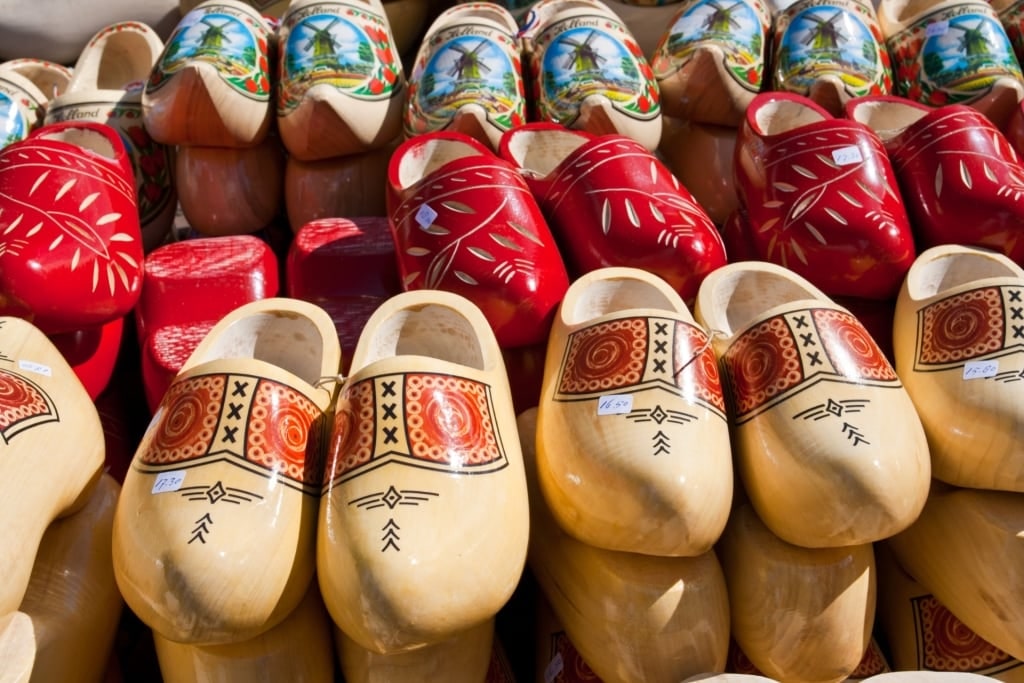
Clogs
These wooden shoes, known as “klompen” in Dutch have been a feature of life in the Netherlands since medieval times and have been enjoying a renaissance as people return to more traditional ways of life.
Carved from a single piece of wood, they are known for being durable and were originally worn by farmers, fishermen, and other laborers to protect feet from wet and muddy conditions.
In Zaanse Schans, there’s a clog workshop where you can see them being manufactured by hand and pick up an original pair handmade by artisans.
Soccer

Soccer
Soccer, or football as it’s known in Europe, is the most popular sport in the Netherlands and when the national team is playing, Oranje Fever, which stems from the team’s bright orange shirts, really hits home. In part, this is thanks to the Dutch team’s distinctive, attacking style of play known as “Total Football”.
Many of the world’s biggest soccer stars came from the Netherlands, including the legendary Johan Cruyff, and Amsterdam’s Johan Cruyff Institute is an educational college dedicated in his honor. At club level the two biggest teams are Ajax of Amsterdam and Feyenoord from Rotterdam.
Catching either club in a match on their home turf is a thrilling must-see while here, even more so when the pair are matched in the highly charged De Klassieker fixtures between the two.
Lager Beers
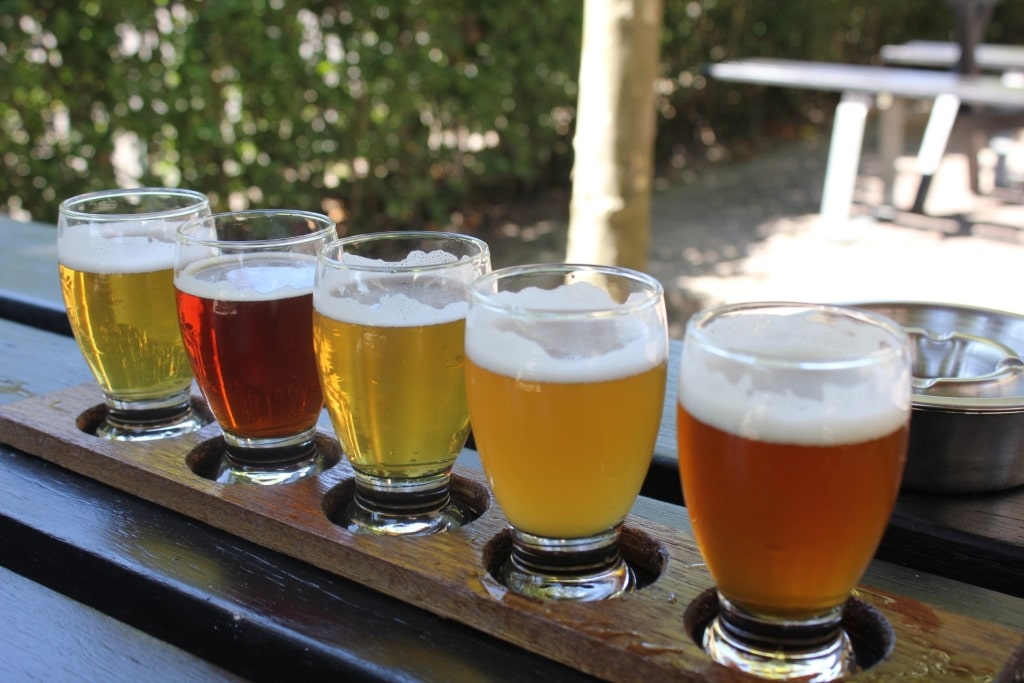
Beers
If you’re a lover of a cold, crisp lager, then a trip to the Netherlands will be right up your street, given that the country is home to two of the world’s biggest brands, Heineken and Amstel.
Founded in 1864, Heineken is one of the most recognizable brands in the world and Amsterdam’s Heineken Experience offers a deep dive into the brewing process at the original factory, followed by a tasting session.
While Amstel is now part of the Heineken stable after a buyout in 1968, it remains a distinct brand of its own. Named after the river that flows through Amsterdam, it has been brewed here since 1870.
For those looking for a less international flavor, the popular Brouwerij ‘t IJ brewery has production facilities, a tap room, and tastings, all housed in the quaint setting of Amsterdam’s De Gooyer Windmill, the tallest wooden windmill in the city.
The Rijksmuseum
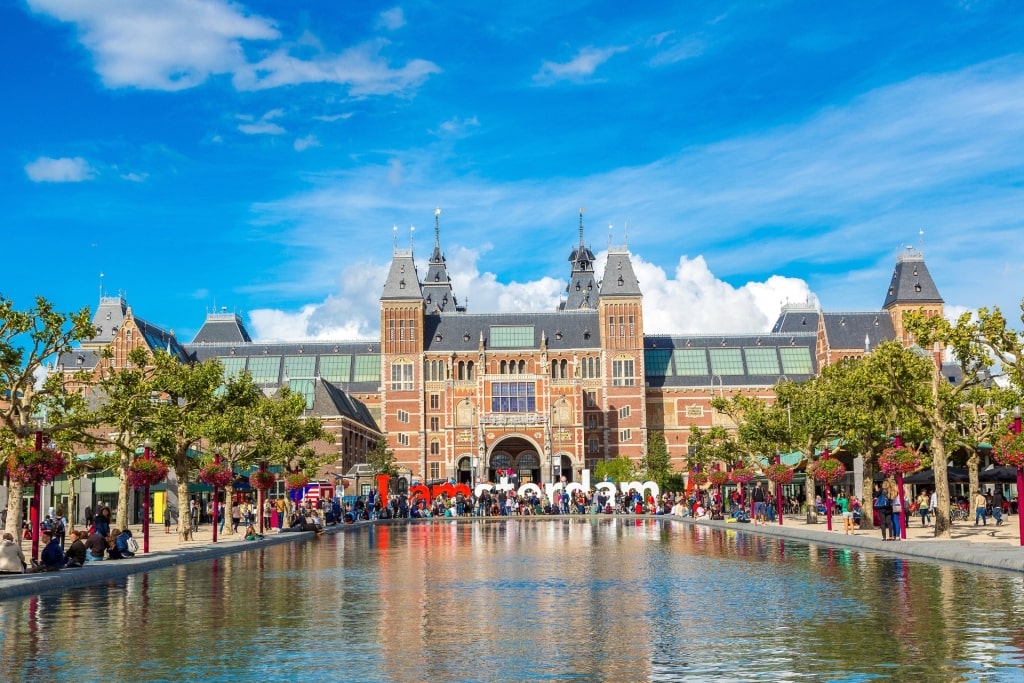
Rijksmuseum, Amsterdam
Dutch art history stretches far beyond Vincent Van Gogh and Amsterdam’s Rijksmuseum, the country’s national museum, is renowned for its extensive collection of Dutch Golden Age paintings.
Founded in The Hague in 1800, the art museum moved to Amsterdam in 1808 and is now a cornerstone of Dutch heritage with works by Rembrandt, Vermeer, and other celebrated artists sitting alongside other significant works of European and Asian art.
Set on Amsterdam’s Museumplein alongside the Van Gogh Museum and the Stedelijk Museum, it is famously home to Rembrandt’s “The Night Watch” as well as the Cuypers Library, the largest and oldest art library in the Netherlands.
Diamonds

Diamonds
When Jewish diamond cutters fled religious persecution in 16th century Spain and Portugal, many of them set up shops in Amsterdam, becoming part of the Dutch Golden Age as the city gained a reputation for diamond cutting and trading.
Royal Coster Diamonds in the Museumplein area is said to be the oldest diamond polishing factory in the world, with Gassan Diamonds on Nieuwe Uilenburgerstraat a close rival. Both offer factory tours to see diamond cutters and goldsmiths at work, as well as the chance to pick up something special.
A sparkling experience can also be had at the Diamond Museum Amsterdam near the Rijksmuseum. It offers a comprehensive history of diamonds, how they are formed and why they are so valued, alongside exhibits of famous and replica jewels.
“Patat” or “Frites”
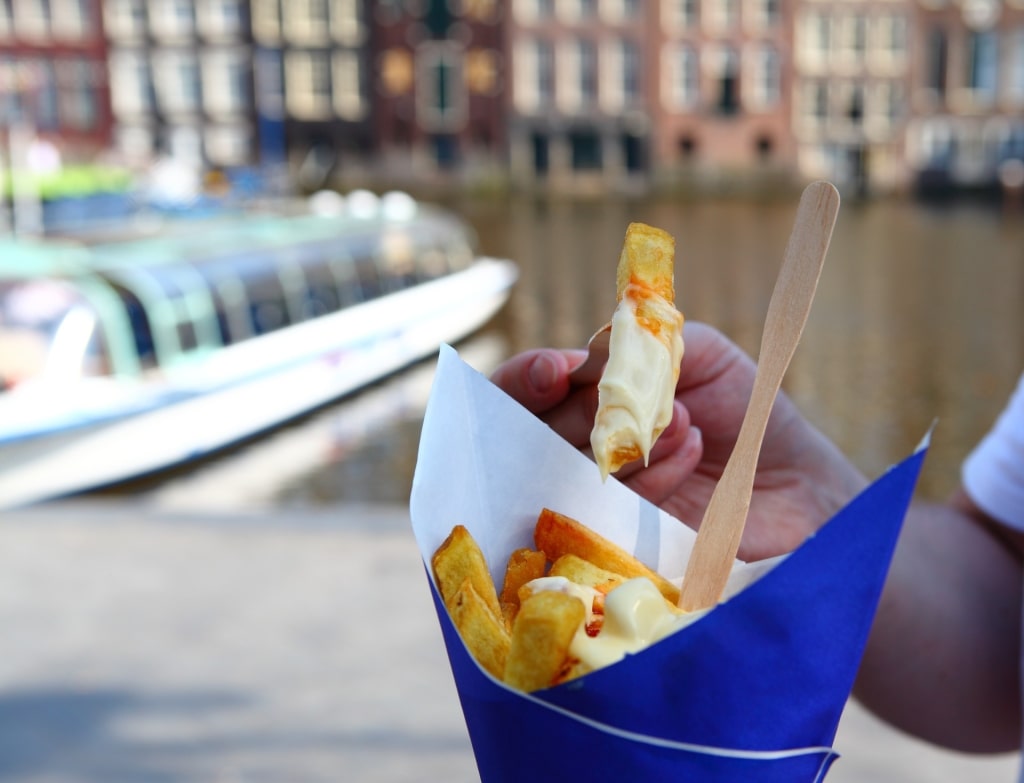
Patat
The Netherlands is not especially known for its cuisine but one thing they have perfected is their version of the French fry. Known as “patat” or “frites”, these are typically thicker than regular fries and are a super-popular street food served with a unique selection of toppings and sauces.
These include satay sauce and curry ketchup, alongside the more typical mayonnaise. Famed stands in the European food city of Amsterdam include Vleminckx Sausmeesters on Voetboogstraat, Manneken Pis with outlets on Damrak and Nieuwendijk, and Frietboutique on Johannes Verhulststraat.
For a truly unique experience, try “Patatje Oorlog” topped with mayonnaise, satay sauce, and raw onions. The name translates to “war fries,” due to the messy combination of toppings.
Den Haag
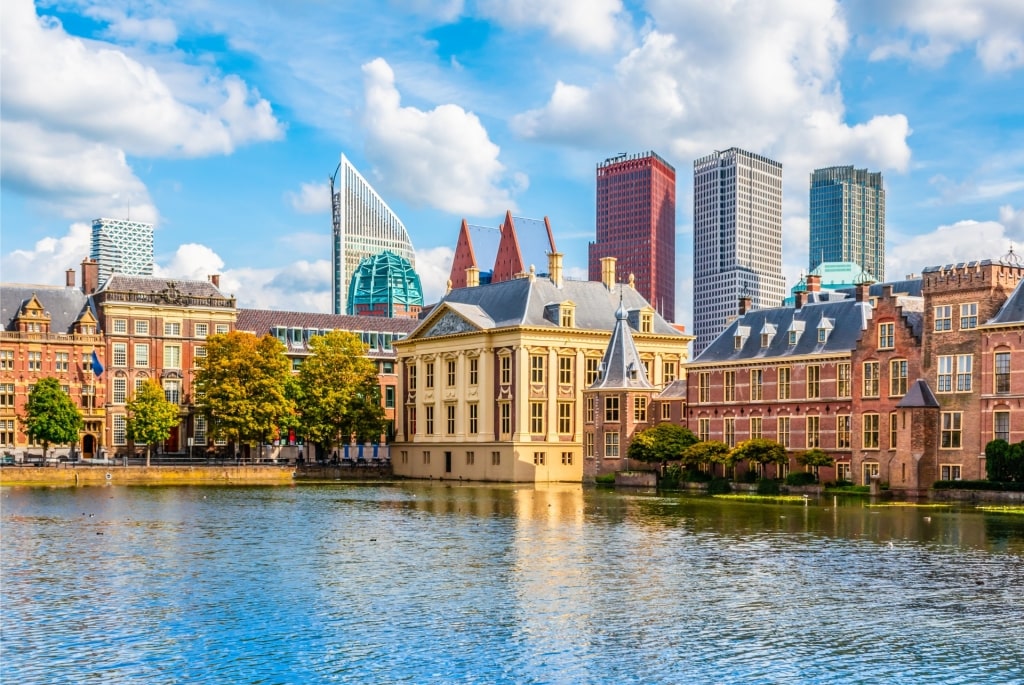
Den Haag
While the beautiful city of Amsterdam is the constitutional capital of the Netherlands, the administrative and royal capital of the country is Den Haag, or The Hague.
The Netherlands’ third largest city, it is home to the Dutch government, the Supreme Court, and the residence of the Royal Family, as well as numerous international organizations, including the International Court of Justice and the International Criminal Court.
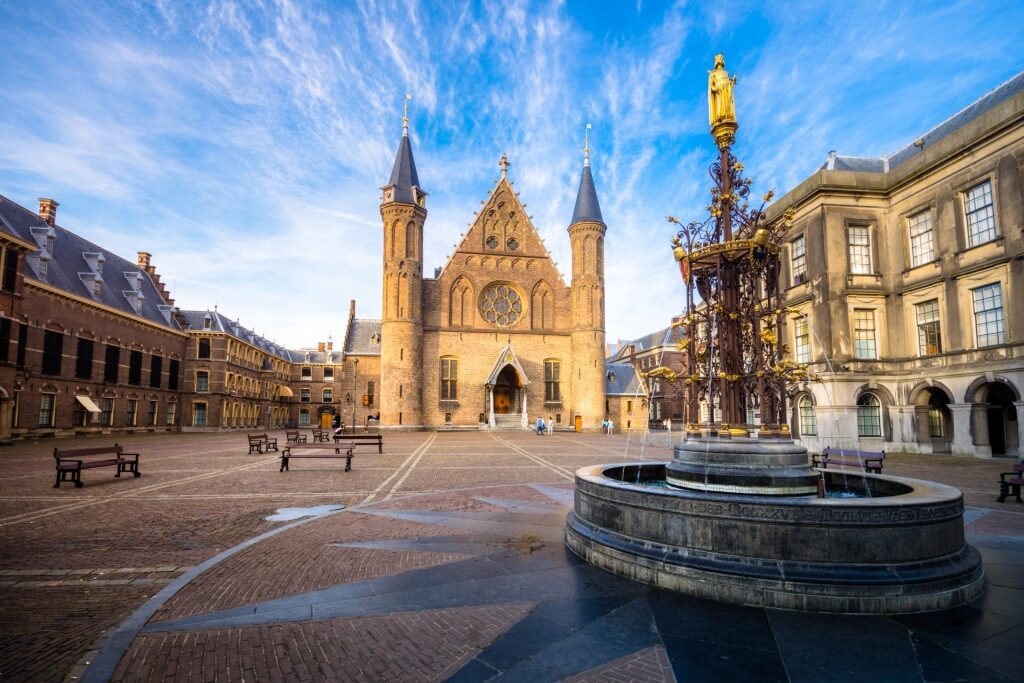
Binnenhof, Den Haag
Founded in the 13th century, the city developed around Binnenhof, a complex of buildings that have been at the center of politics here for centuries. Visitors can take guided tours of the Dutch parliament, as well as the Peace Palace, an iconic building that houses the International Court of Justice and the Permanent Court of Arbitration.
Other notable sights include the Mauritshuis Museum with its impressive collection of Dutch Golden Age paintings, including Vermeer’s famed “Girl with a Pearl Earring”, and the Madurodam. This miniature park showcases 1:25 scale models of famous Dutch landmarks and cities and is a great way to learn more about the country.
Read: Three Days in Amsterdam

Amsterdam
Embark on your next amazing holiday aboard a Netherlands cruise with Celebrity Cruises.
